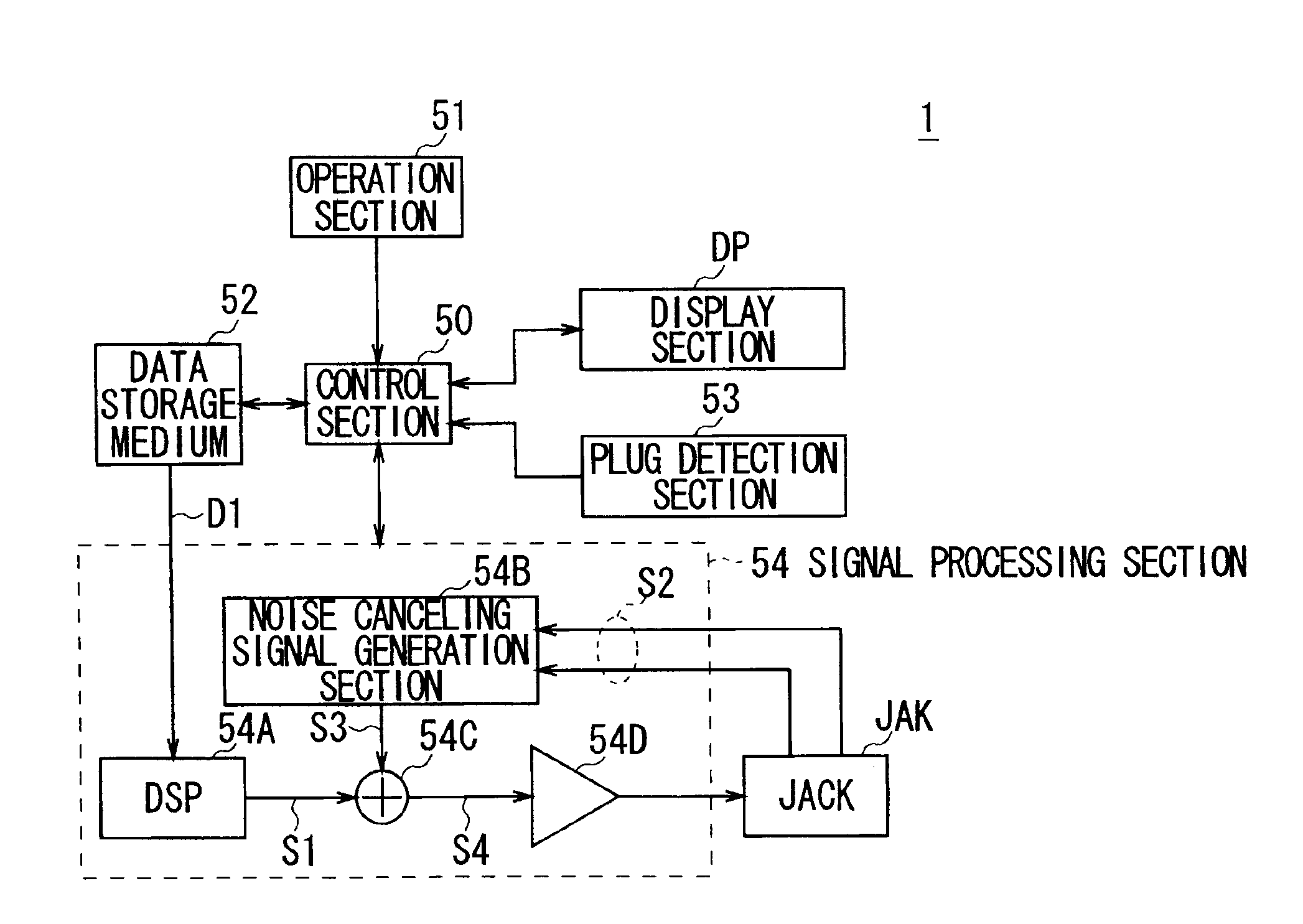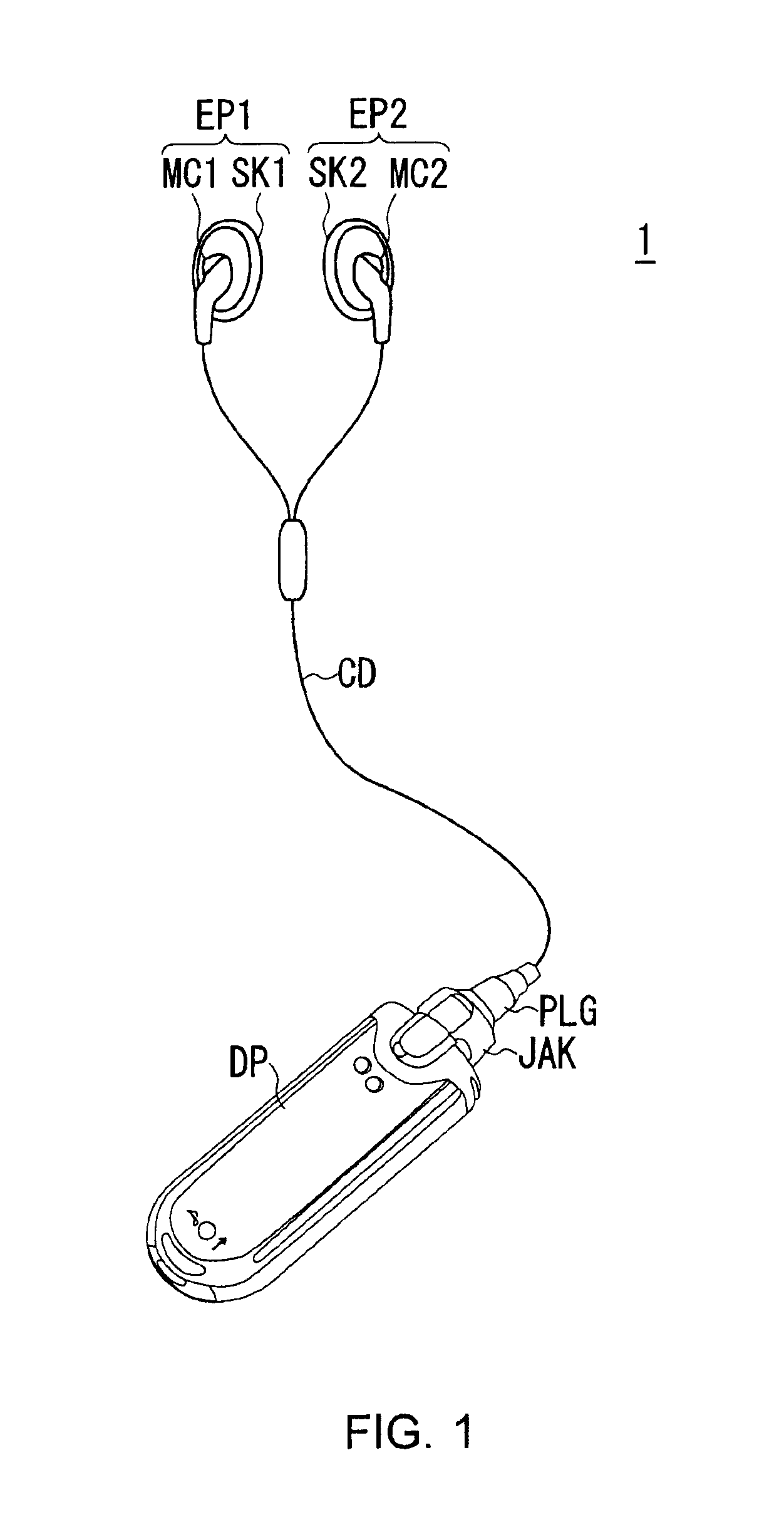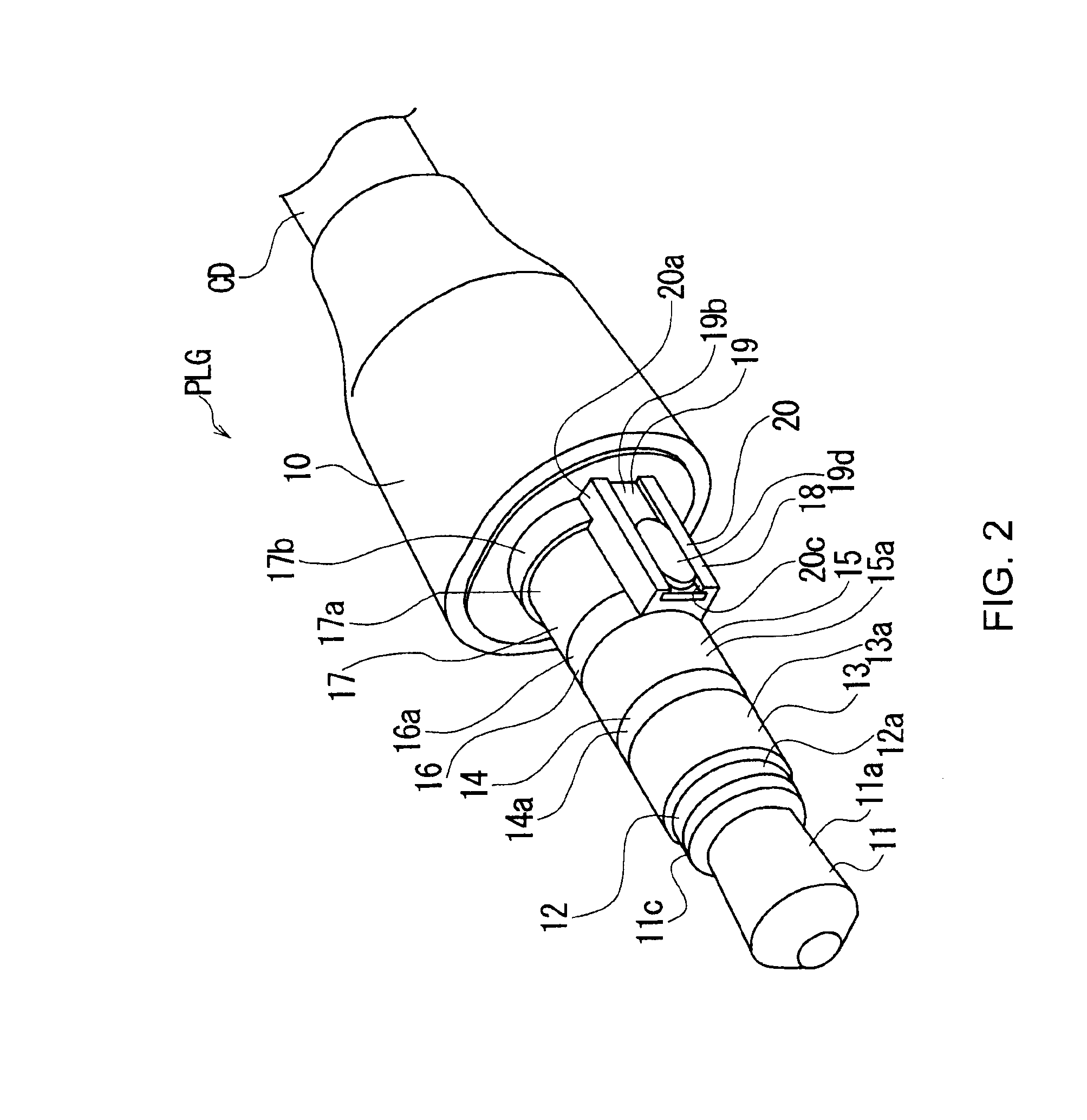Audio apparatus
a technology of audio equipment and audio output, which is applied in the direction of transducer details, substation/switching arrangement details, instruments, etc., can solve the problems of difficult downsizing of noise cancelling headphones, large size of audio equipment, so as to prevent howling, reduce output, and reduce the effect of siz
- Summary
- Abstract
- Description
- Claims
- Application Information
AI Technical Summary
Benefits of technology
Problems solved by technology
Method used
Image
Examples
first embodiment
(1) First Embodiment
(1-1) Appearance Configuration of a Portable Music Player
[0056]FIG. 1 illustrates the appearance configuration of a portable music player including a hard disk as a storage medium for storing audio signals (data). The portable music player 1 is substantially rectangular parallelepiped in shape with rounded ends, which a user can hold up by one hand.
[0057]On the surface of a housing of the portable music player 1 are placed various buttons, a display section DP and the like. The portable music player 1 also includes a jack JAK at a predetermined position, to which a plug PLG of a noise canceling earphones EP1 and EP2 are connected. The plug PLG is connected to the earphones EP1 and EP2 via codes CD. The earphones EP1 and EP2 include a microphone (The earphones EP1 and EP2 are also referred to as “microphone-attached earphones”).
[0058]The plug PLG of the microphone-attached earphones EP1 and EP2 can be inserted into or pulled out of the jack JAK of the portable mus...
second embodiment
(2) Second Embodiment
(2-1) Basic Principle of Noise Canceling
[0145]With reference to FIG. 17, the basic principle of noise canceling will be described. A microphone 101, which is adjacent to a user's ear, collects noise NZ around it and then supplies a noise signal 5101 representing the noise NZ to a filter 102.
[0146]The filter 102 inverts the phase of the noise signal 5101 and then supplies via an accumulator 103 to an amplifier 104 the inverted noise signal as a noise reduction signal 5102. To eliminate the noise NZ, the amplifier 104 amplifies the amplitude of the noise reduction signal 5102 in accordance with the amplitude level of the noise NZ and then supplies a resultant noise reduction signal 5103 to a speaker 105. This reduces the noise NZ.
[0147]By the way, an audio signal 5104, supplied from an audio source 106, is combined with the noise reduction signal 5102 by the accumulator 103. The combined signal 5105 is supplied to the speaker 105 which then outputs clear sound wit...
third embodiment
(3) Third Embodiment
[0198]The appearance configuration of a portable music player of the third embodiment is the same as that of the portable music player 1 (FIG. 1) of the first embodiment. The configuration of a plug and jack of the third embodiment is the same as that of the plug PLG and jack JAK of the first embodiment (FIGS. 2 to 12).
(3-1) Circuit Configuration of the Portable Music Player
[0199]FIG. 23 illustrates the circuit configuration of the portable music player 1 according to the third embodiment (The parts of FIG. 23 have been designated by the same reference numerals and symbols as the corresponding parts of FIG. 3). Instead of the plug detection section 53 (FIG. 1), the portable music player 1 includes a plug detection section 300.
(3-2) Configuration of the Plug Detection Section
[0200]As shown in FIG. 24, the plug detection section 300 includes a resistance 301, a voltage detection circuit 302 and a switch 303.
[0201]The resistance 301 is placed between an audio input ...
PUM
 Login to View More
Login to View More Abstract
Description
Claims
Application Information
 Login to View More
Login to View More - R&D
- Intellectual Property
- Life Sciences
- Materials
- Tech Scout
- Unparalleled Data Quality
- Higher Quality Content
- 60% Fewer Hallucinations
Browse by: Latest US Patents, China's latest patents, Technical Efficacy Thesaurus, Application Domain, Technology Topic, Popular Technical Reports.
© 2025 PatSnap. All rights reserved.Legal|Privacy policy|Modern Slavery Act Transparency Statement|Sitemap|About US| Contact US: help@patsnap.com



